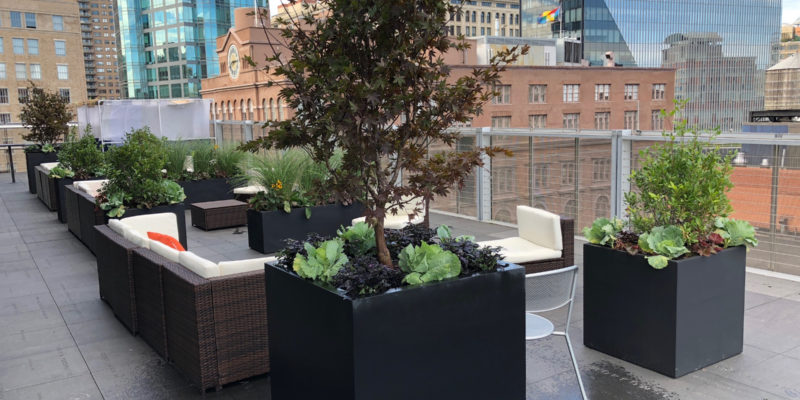According to a number of studies on millennials and the changing needs of the next-gen workplace, employers who want to recruit and retain top talent, and building managers who want to lease to and retain high quality tenants, the answer is: health, wellness and amenities.
Chief among these is the need to think about features that increase social connections. Healthier people are happier people and data suggests that nature plays a strong role in contributing to both. Plants, trees, and foliage offset negative impacts from poor building air and light systems; bike paths and nature trails foster fitness, and converted outdoor workspaces wired for Wi-Fi boost productivity and engagement. Rooftop gardens with lounge areas and recreational areas give people a chance to freshen their perspective.
“A lot of these approaches are already part of strategic landscape thinking,” said Bruce Moore Jr, president of ELM and an advocate for landscapes that impact healthier lifestyles. “The demand exists, it’s just a matter of understanding that most of the amenities can be added for relatively low cost once the infrastructure is in place.”
Some of the best ways to introduce more green features include transforming loading docks to landscaped walkways, opening up interiors for large planted atriums that bring in natural light, and green walls – vertical plantings and living art forms that extends the building’s brand.
LEED designations, WELL-certifications, and corporate sustainability goals are reviving interest in finding better ways to create a bridge between the built and landscaped environment. Green roofs, in particular, with roof decks, lounge areas, putting greens and bocce ball courts, are thriving in urban business corridors and emerging bedroom communities where corporate HQs, redeveloped commercial properties, and aging office parks are being turned into highly desirable office space.
Workplace amenities that attract people, attract business. “With blurred lines between personal and professional lives impacting everyone, workplaces no longer exist merely for career paths,” said Moore. “Adding nature into the equation ups the ante to create better places to live, work and play overall.”
That, and the case for the business benefits of a sustainable footprint, whether on the roof or on the ground. “People today expect more: property managers and owners want return on investment, employees want features they can use, and investors want to spend less for more.”
To learn more about tenant amenities and green roofs, updating your Class A property landscape or making your Class B property more competitive, contact ELM President, Bruce Moore Jr. at 203-316-5433.
Photo: The green roof at The Cooper-Union in Manhattan was revitalized by ELM to include lounge areas, a bocce ball court, and reception and entertaining space.

